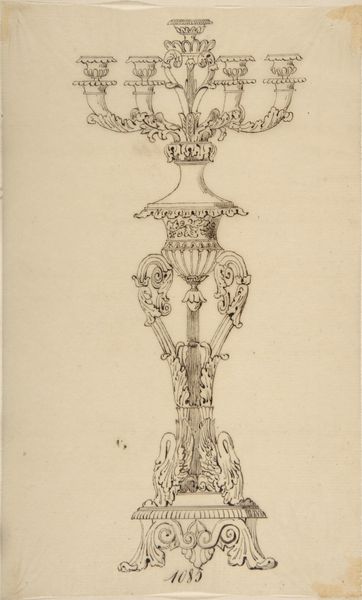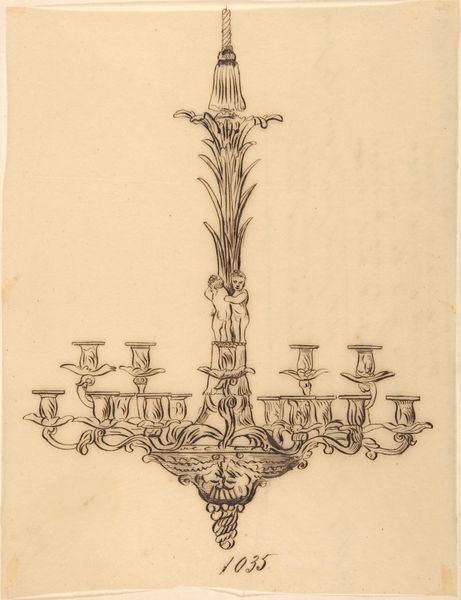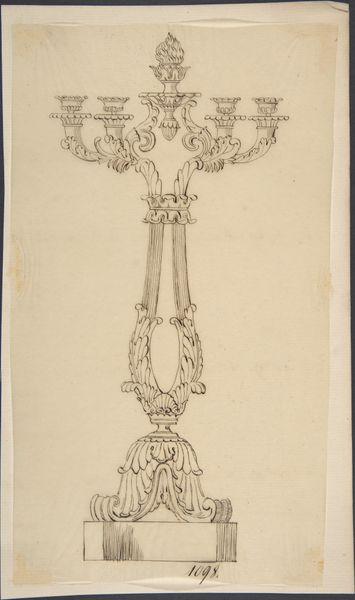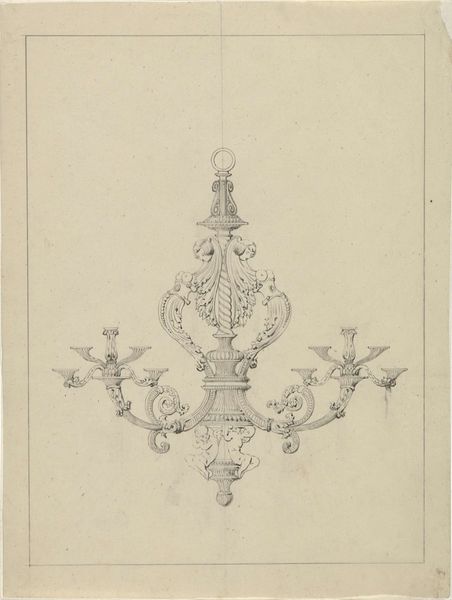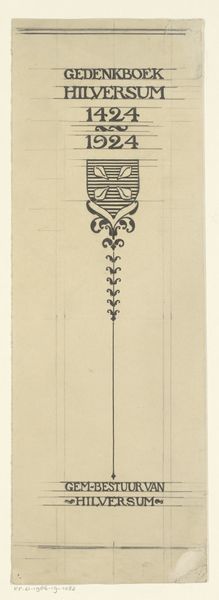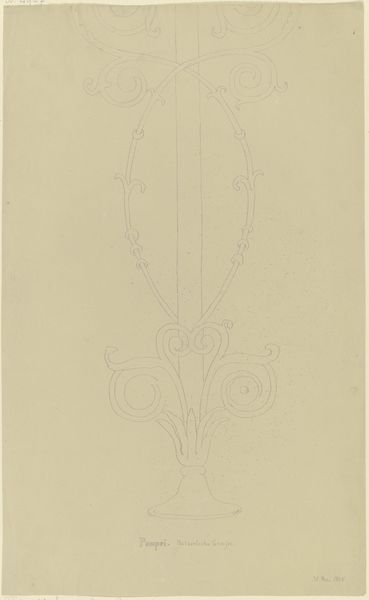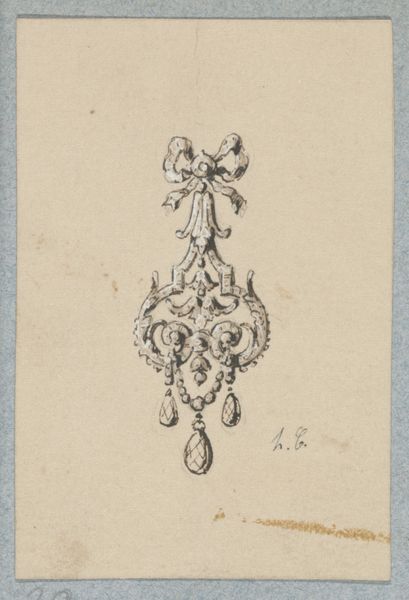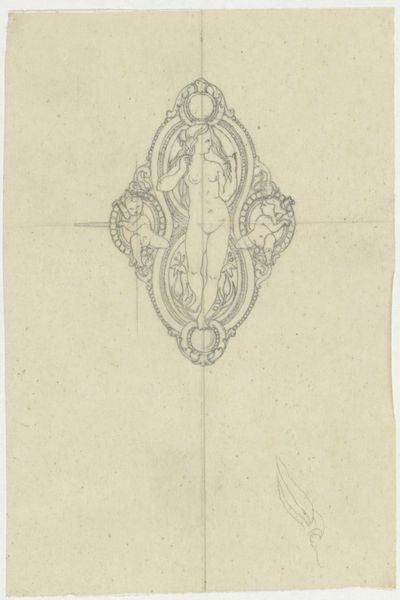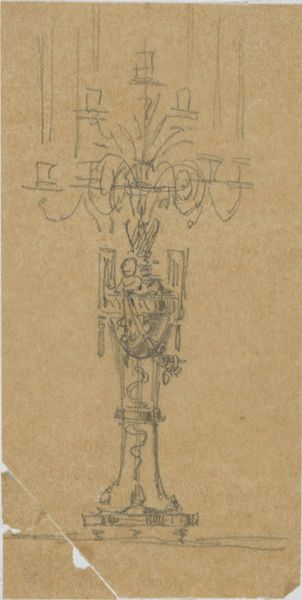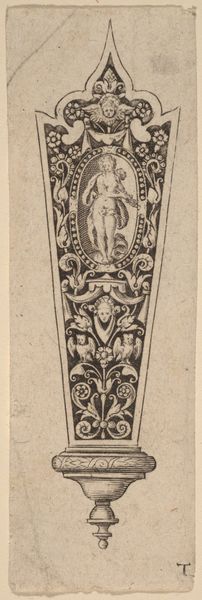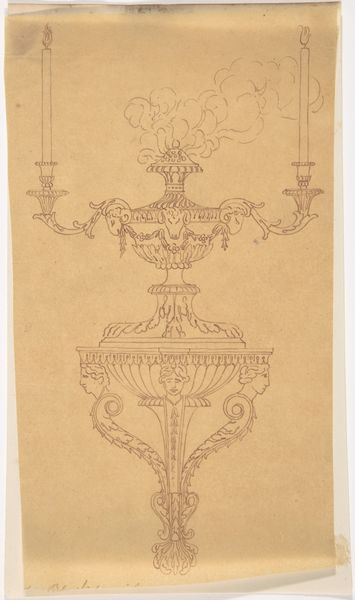
drawing, print
#
drawing
# print
#
pen sketch
#
form
#
line
#
decorative-art
Dimensions: sheet: 8 7/8 x 5 1/8 in. (22.5 x 13 cm)
Copyright: Public Domain
Editor: This is an anonymous 19th-century drawing, "Design for a Candelabra," held at the Metropolitan Museum of Art. The linear quality makes it look quite precise. What can you tell me about the historical significance of a design like this? Curator: This design embodies the 19th-century fascination with reviving historical styles, particularly Neoclassicism and the Rococo. Consider how the candelabra as an object was shifting in meaning, from solely functional to a signifier of status and taste within the rapidly growing middle class. The detailed drawings, often circulated as prints, served as aspirational models and tools for craftsmen adapting to industrial production. Editor: So it wasn't necessarily meant to be a unique artwork, but something more mass-producible? Curator: Precisely. Think about how the museum acquires and displays such objects. Is it as fine art, or as evidence of broader cultural trends in design and consumption? The very act of displaying it changes its status, right? It transforms a utilitarian blueprint into an art object. Notice also the almost aggressively ornamental flourishes--the swans, the leafy details. What might that suggest about the social aspirations of those who might own such an object? Editor: That makes sense. Seeing it displayed in a museum definitely elevates it. The swans at the base, now that you mention it, feel almost over the top! I initially just saw it as a drawing, but now I see it as part of this bigger shift in how objects were being produced and consumed. Thanks. Curator: And remember, the "anonymous" label itself invites a socio-historical question: Why are the designers and craftspeople behind such widespread aesthetic styles often uncredited by institutions, obscuring histories of labor and creativity? There is so much more here than just design; it reveals systems of taste.
Comments
No comments
Be the first to comment and join the conversation on the ultimate creative platform.

